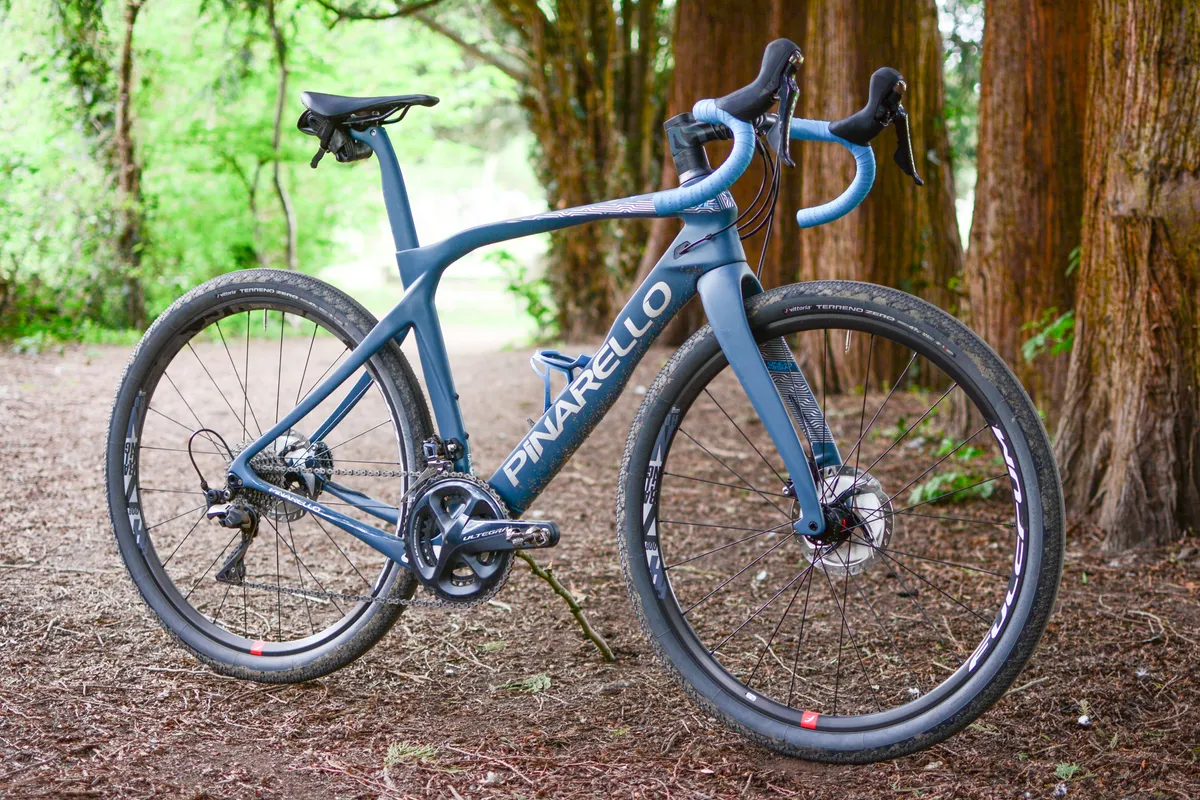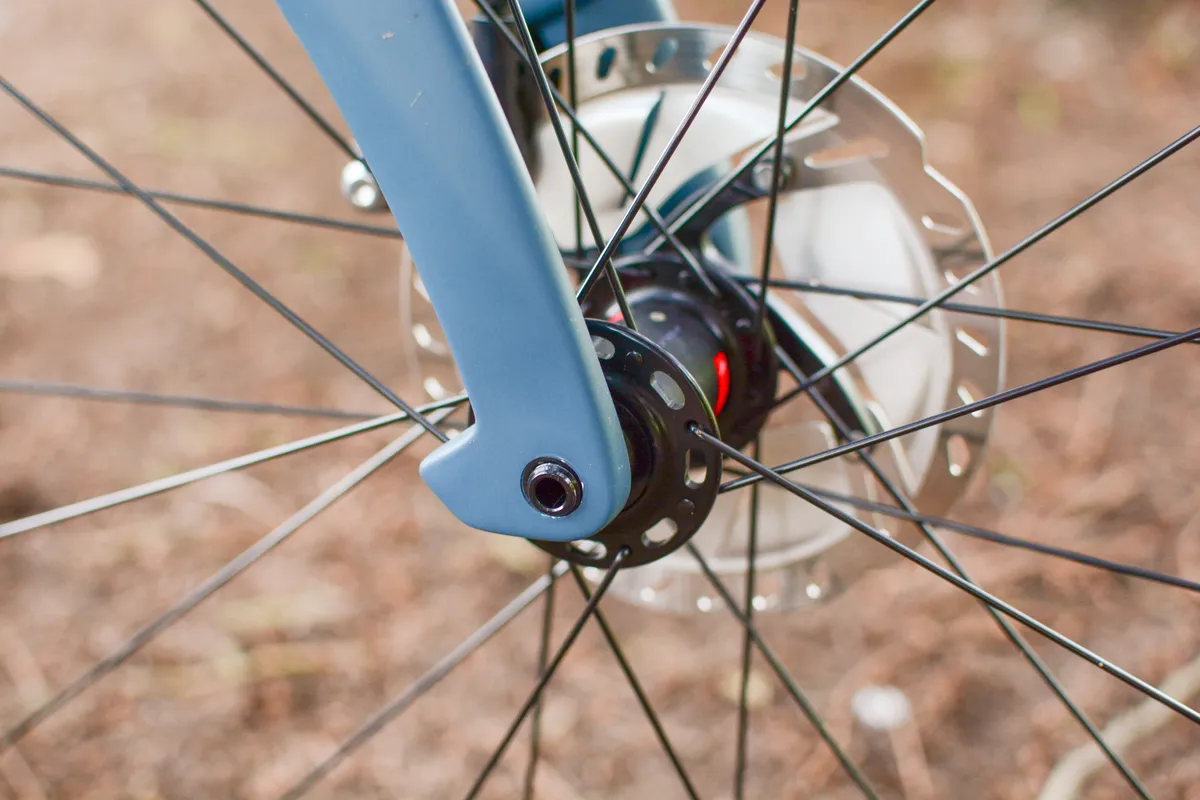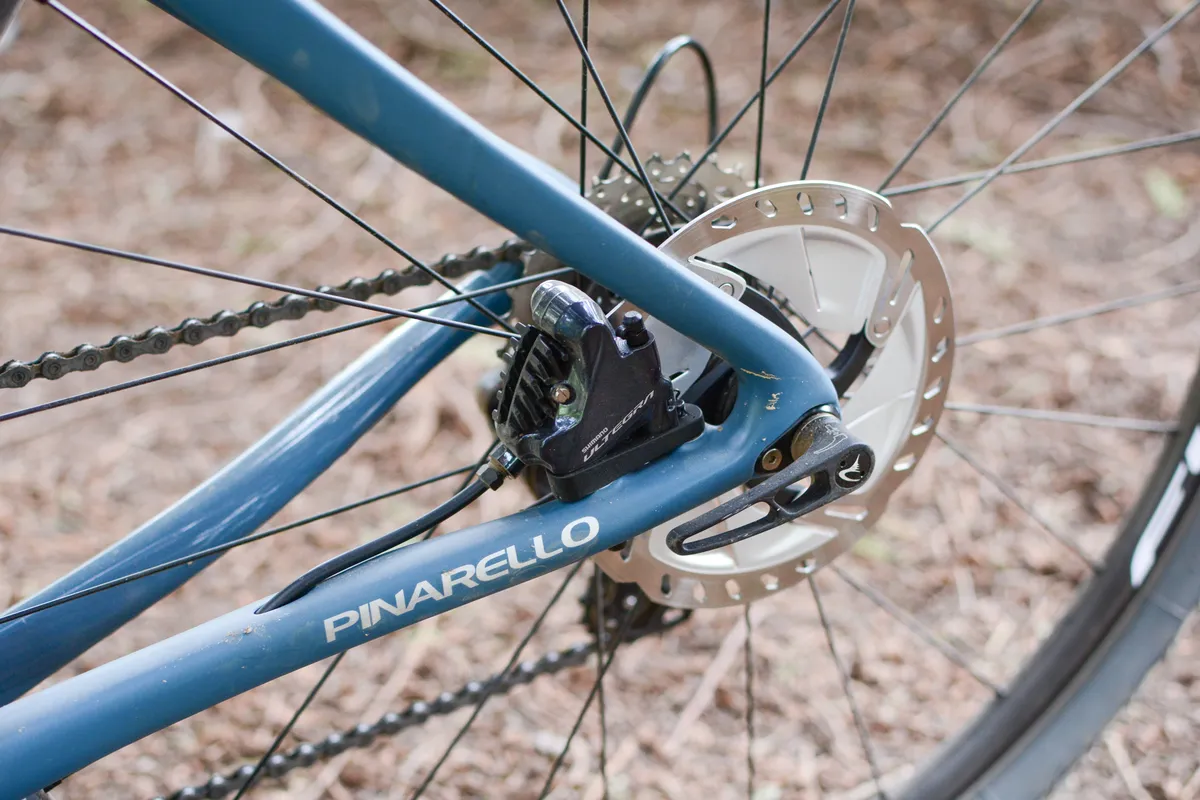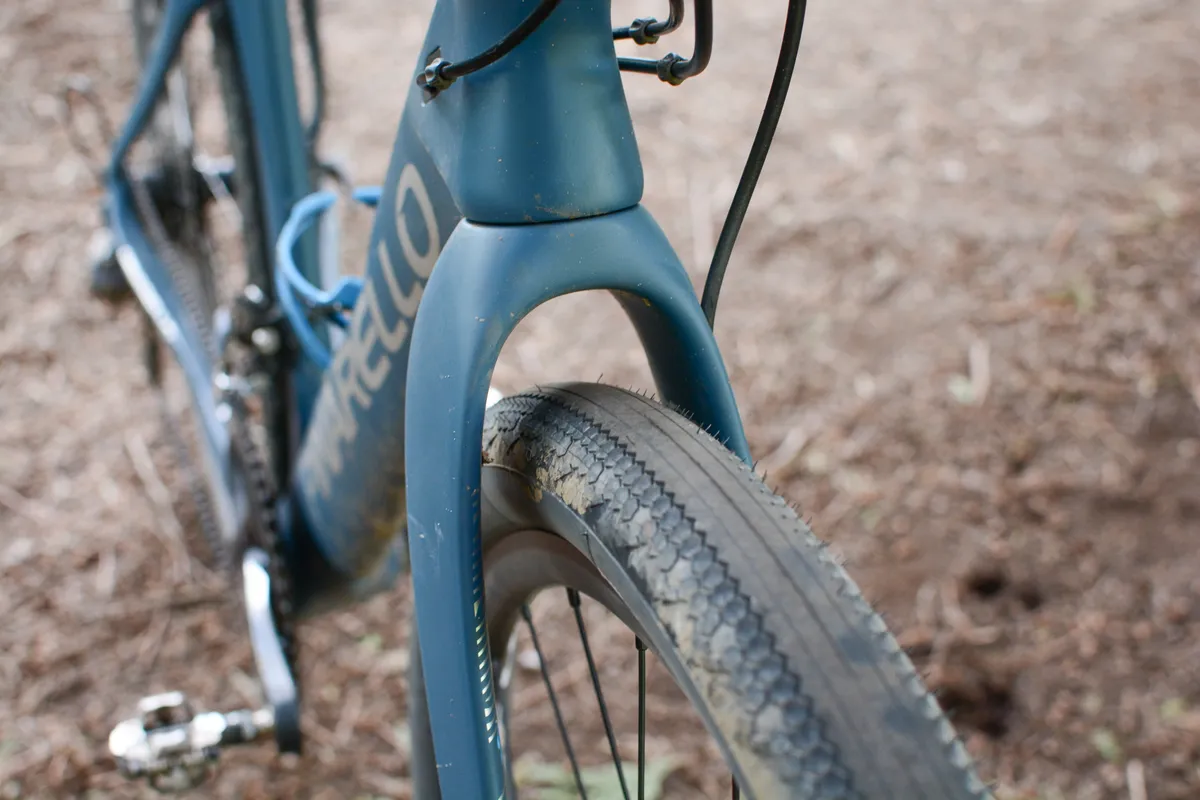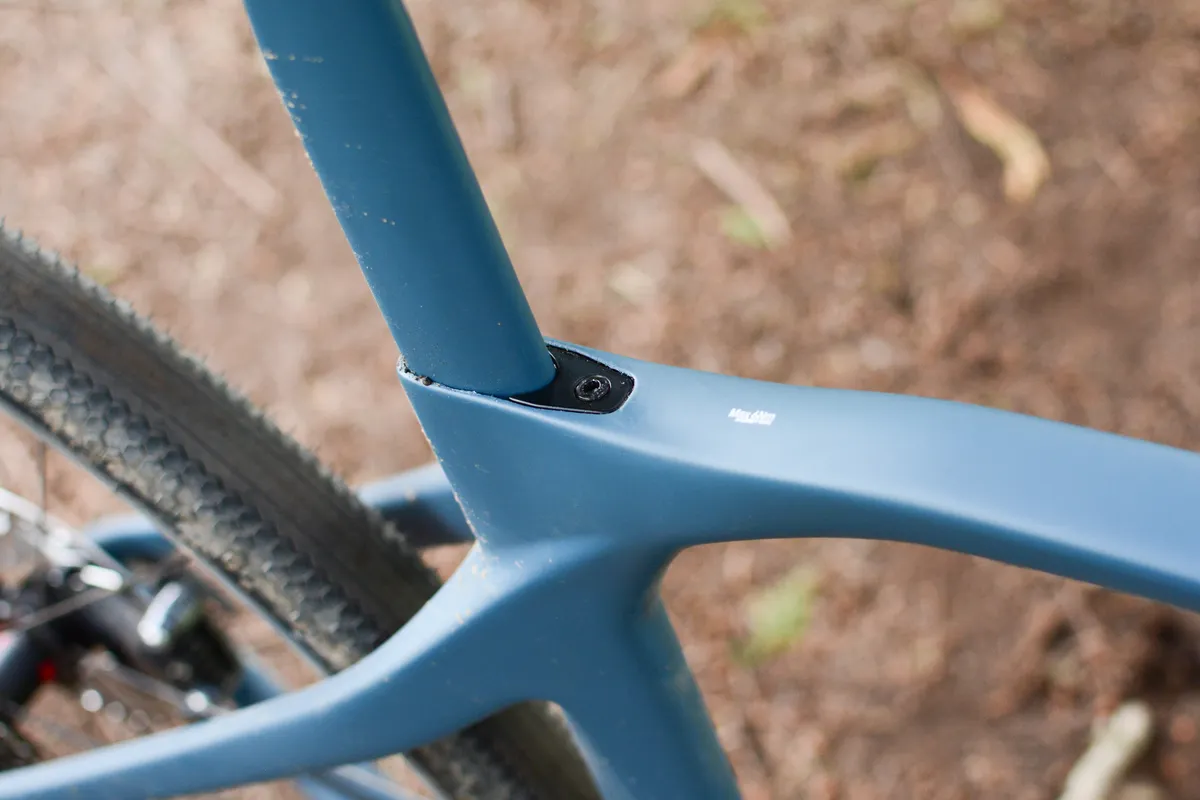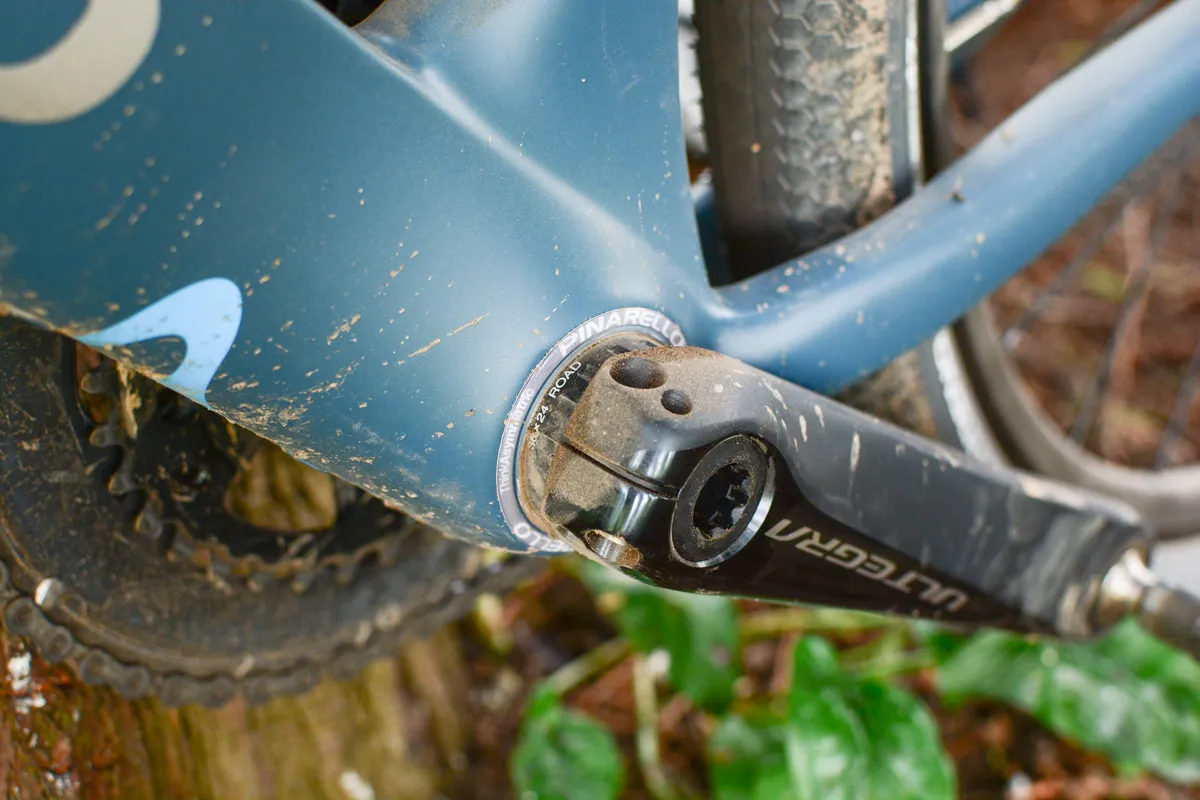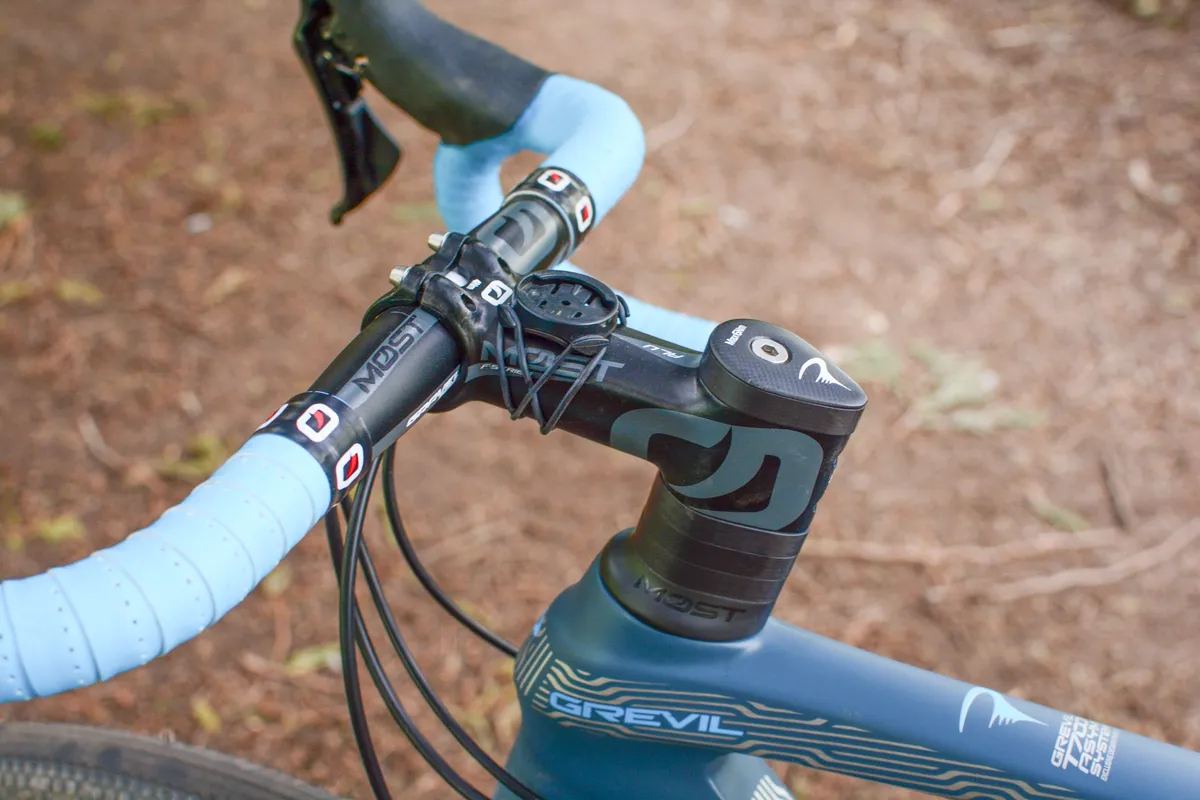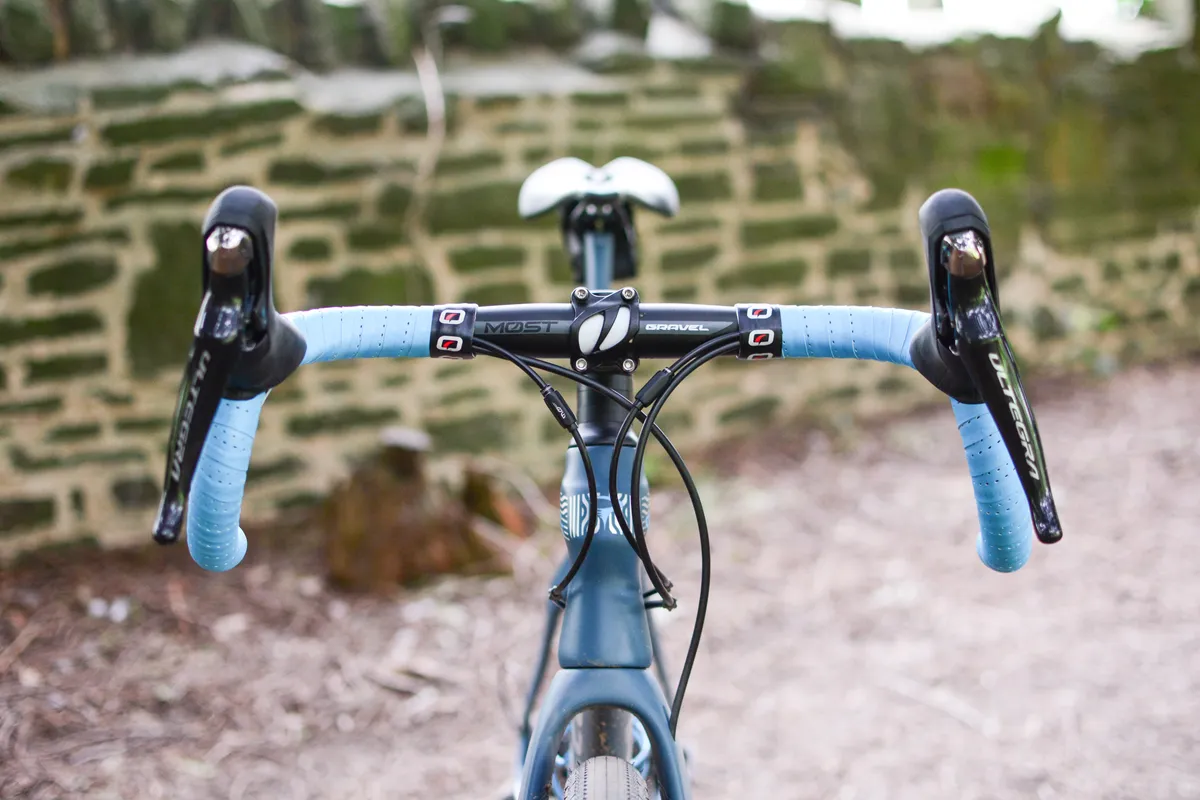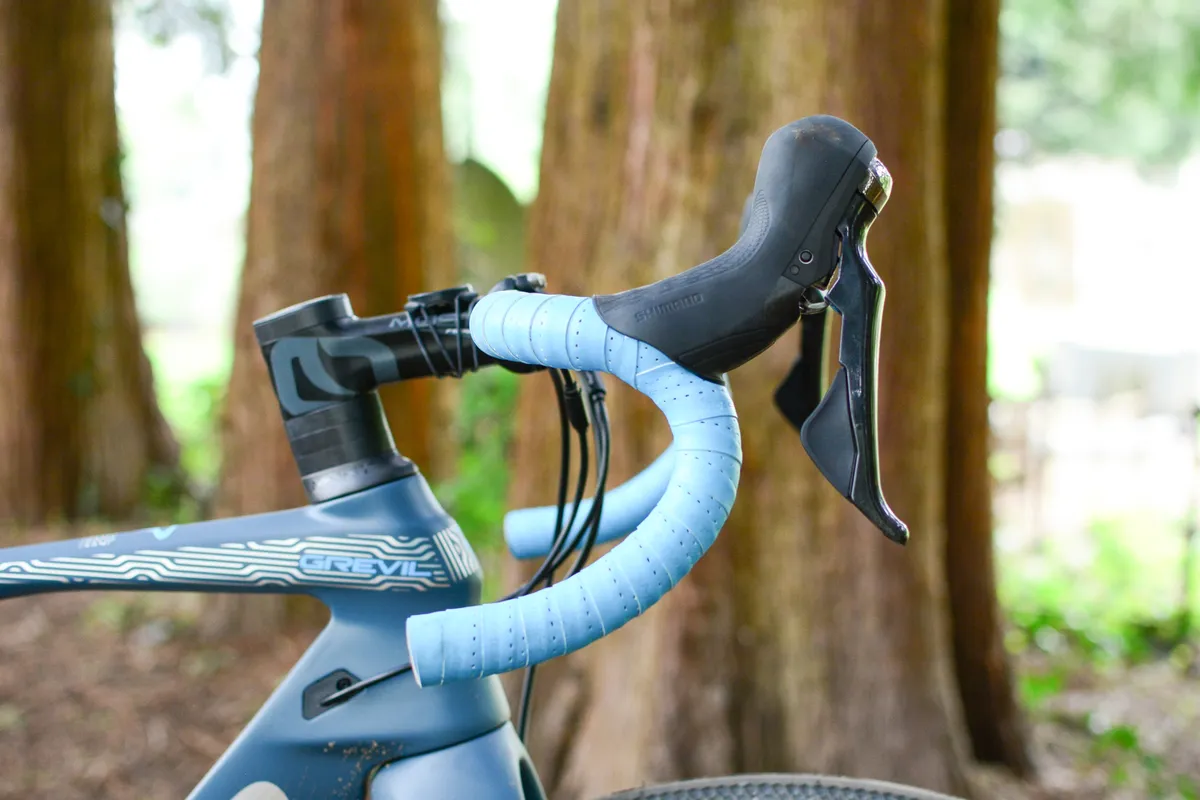The Pinarello Grevil is an aero gravel bike from a brand best known for its Tour de France winning superbikes with wavy forks. It’s fast and expensive and it rides like an aero race bike with massive tyres.
Meet the Grevil: straight lines are for squares
When the Grevil first appeared in my inbox, I laughed. Like so many Pinarellos, it’s unapologetically bonkers looking, its designers seemingly allergic to rulers. I may have commented it looks like a bike that’s leaned against a radiator for too long. Sorry, Pinarello.
Dare I say it, the Grevil’s looks have grown on me. It’s almost muscular in appearance and whatever your feelings, I think we can all agree this bike is not boring.
The Grevil’s carbon frame features the usual aero cross-sections and includes the same recessed downtube design the Dogma F10 uses to improve the aerodynamics of bottle-portage. Incidentally, there’s an extra set of bottle bosses under the down-tube for big days out, too.
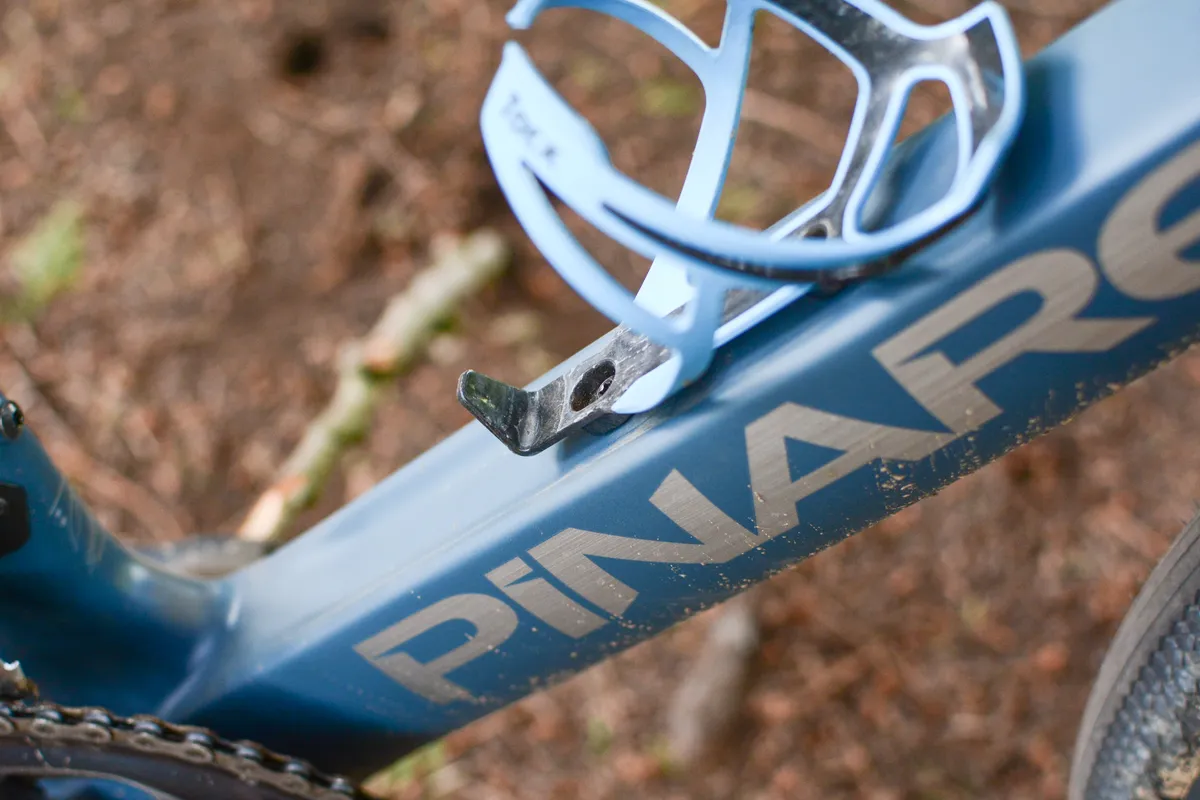
The aero theme continues with profiled headset spacers (there’s a conventional round steerer underneath) and a flush-mounted seat wedge (as found on seemingly every aero road bike on the market).
Pinarello’s very literally named Forkflap smooths airflow over the front brake caliper while a vestigial-looking nubbin sprouts from the other fork leg.
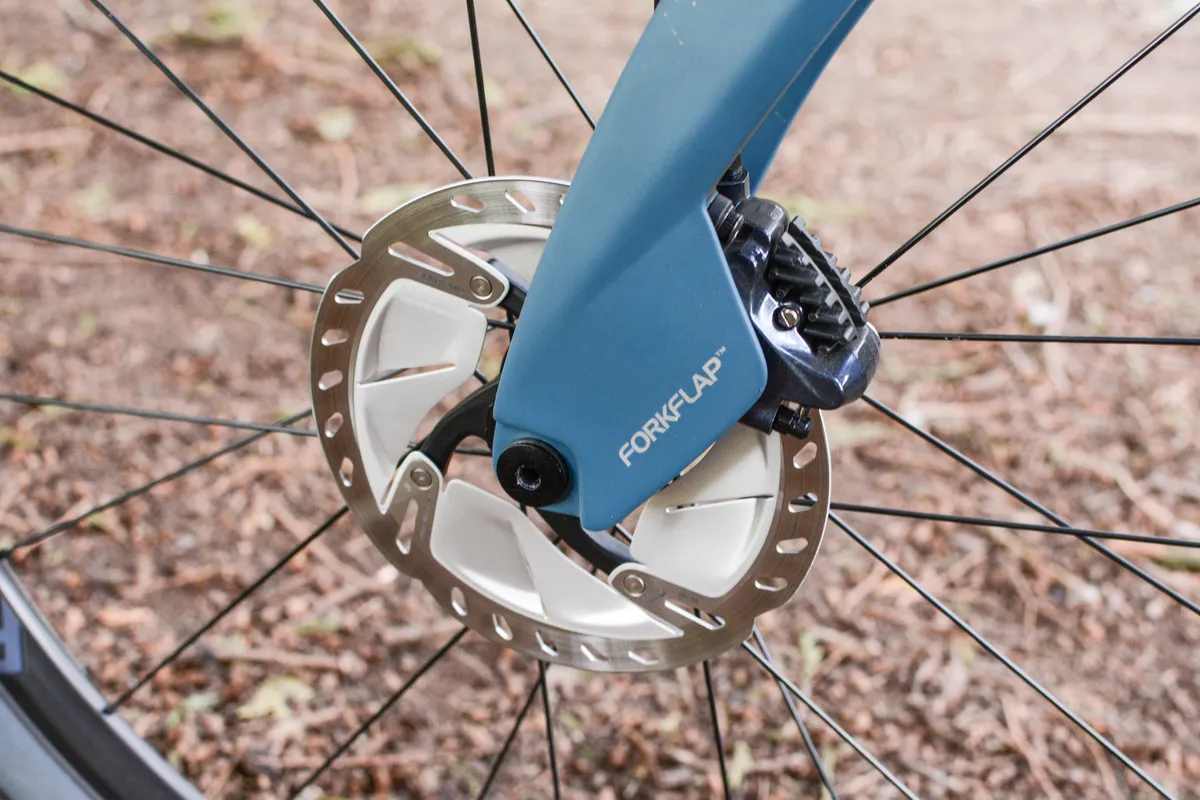
The rear end is asymmetrical. We’re used to seeing dropped drive-side chainstays used to create tyre clearance on bikes like this, but the Grevil drops the right-hand seatstay too.
According to Pinarello’s marketing copy, this is all in an effort to balance pedalling forces.
Speaking of clearances, the Grevil is designed to take tyres up to 700x42mm or 650bx2.1in. Its front derailleur mount is removable, so it’s 1x-friendly.
The build: Ultegra, Fulcrum and Most
The standard Grevil build gives you a full Ultegra R8000-series hydraulic groupset, with the clutch-equipped RX derailleur replacing the standard option in the interests of chain security.
The gearing is somewhat road-oriented with 50/34 cranks and an 11-32t cassette. While that big cog sounds generous and is perfectly adequate for general larking about, it’s likely riders who want to schlep bikepacking luggage up gravel climbs will seek lower gears.
In a move that is pure Pinarello, the bottom bracket is Italian threaded for some reason. Properly tightened this shouldn’t cause any issues, but it seems an odd choice in this day and age, and it limits aftermarket options when it comes time to replace the bearings.
Pinarello specs the Grevil with Fulcrum’s 650b Racing 7B DB wheelset, a sober middle-weight option that isn’t particularly wide (by gravel standards) at 19mm internal, but they do the job just fine.
The finishing kit is all Most, Pinarello’s in-house brand. There’s little to fault, although thin, hard bar tape on a very ordinary alloy bar doesn’t exactly scream luxury.
Oh, and the T20 stem and bottle cage bolts are inexcusable. Why on would you choose a bolt size that 99.9 percent of mainstream multitools lack?
One thing I do appreciate, however, is the bars . While many manufacturers are fitting trendy gravel-specific bars with comically flared drops, Pinarello sticks with a subtle flare that aids wrist clearance and technical descending, but doesn’t force you into an odd elbows-out position.
Grevil geometry — fast everywhere
Pinarello notes that the Grevil’s geometry is shorter and taller than a traditional road bike's (a medium/53 has 374mm of reach and 553mm of stack), which aims to put the rider in a more relaxed position, with more of a bend in the arms for better shock absorption.
This also creates a slightly higher centre of gravity, which Pinarello reckons makes for more agile handling (although conventional wisdom would see the consequent reduced stability as a disadvantage).
The front end is a degree and a half slacker than the equivalent-sized Dogma, which supposedly allows the fork to absorb more vibration, presumably by flexing more. Fork offset has been tweaked too in an effort to improve stability on rough ground.
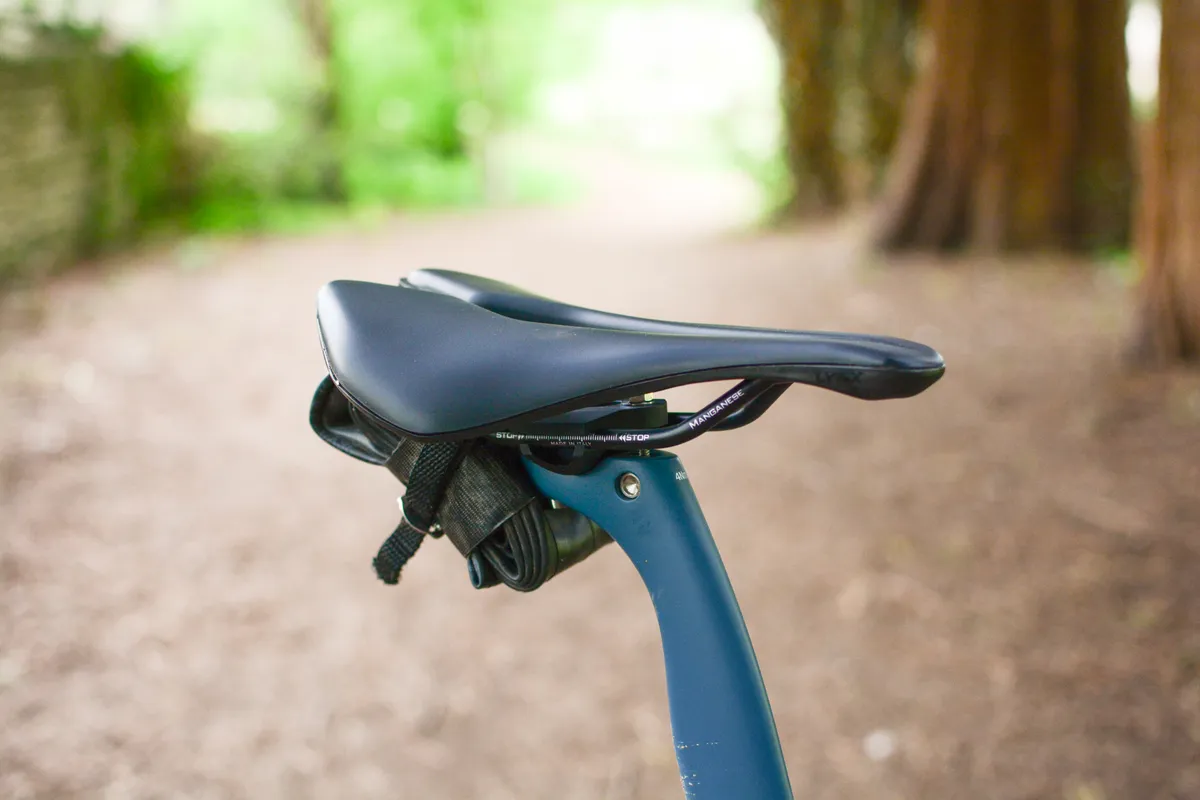
The Grevil also sports a fairly slack seat angle — 72.5 degrees on a medium/53 — which reduces the severity of shocks transmitted to the rider’s bottom.
This makes perfect sense, but the slight issue is that the Most seatpost has a decent amount of setback, meaning some riders may struggle to get the saddle far enough forward.
But is it a gravel bike?
As a more versatile road bike, the Grevil works well.
As proven time and again with bikes such as 3T’s Exploro, fat slick tyres are actually pretty good on tarmac, giving up less in outright speed than you might imagine.
They’re definitely stodgier feeling than standard-size road tyres, but the larger contact patches lend cornering confidence that big balloon profile skims over road imperfections.
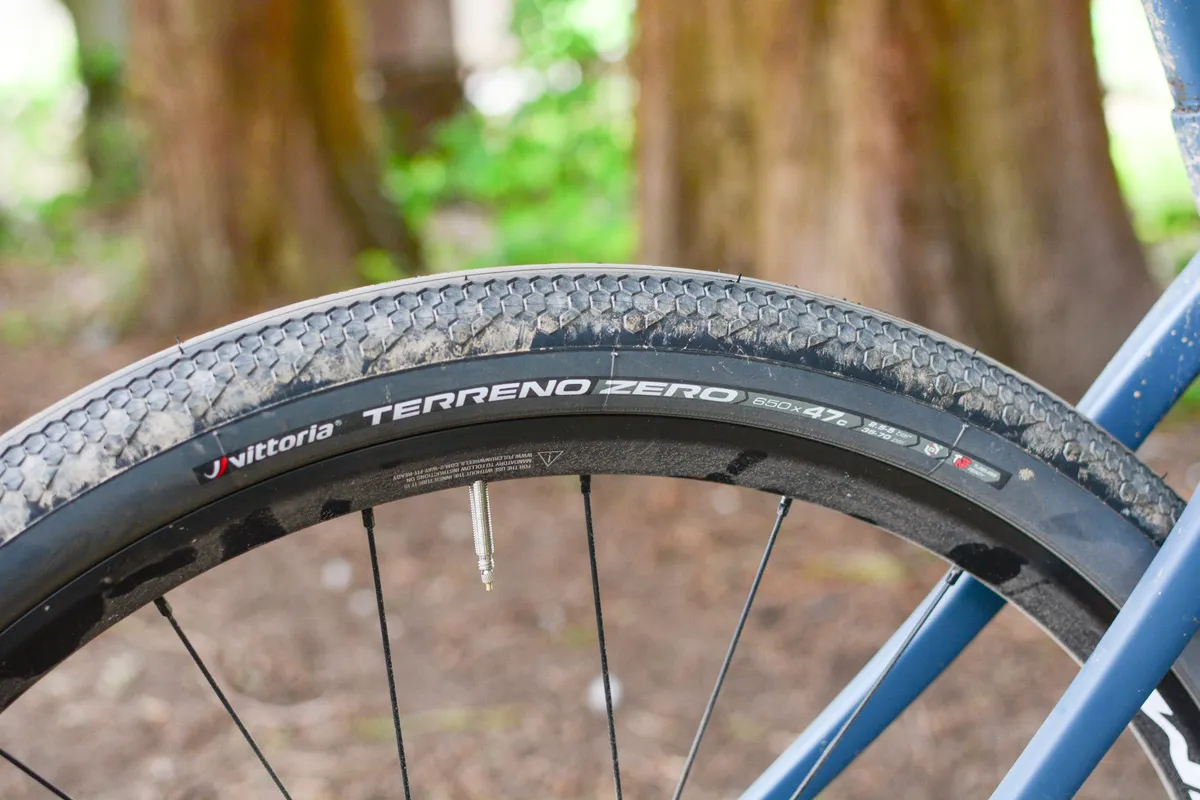
At the same time, the extra width lets you ride on non-tarmacked surfaces at speed without pinging off every pebble or pinch flatting if you haven’t yet gone tubeless (you really should on a bike like this).
Big semi-slicks are good at everything that doesn’t demand bite but, of course, no tyre can excel everywhere, and they’re predictably hopeless in mud or on looser surfaces.
The riding experience isn’t exactly cosseting, however. For all its fat-tyred peacocking, the Grevil feels at its heart like a road bike. It’s stiff and fast and it will knock you around if you take it anywhere rocky.
The Grevil is thoroughly at home blasting along fire roads where it feels sure-footed and quick, but it’s definitely not a mountain bike with drop bars. It’s also not really an adventure bike — that third set of bottle bosses is nice to have, but that’s your lot when it comes to luggage-toting practicality.
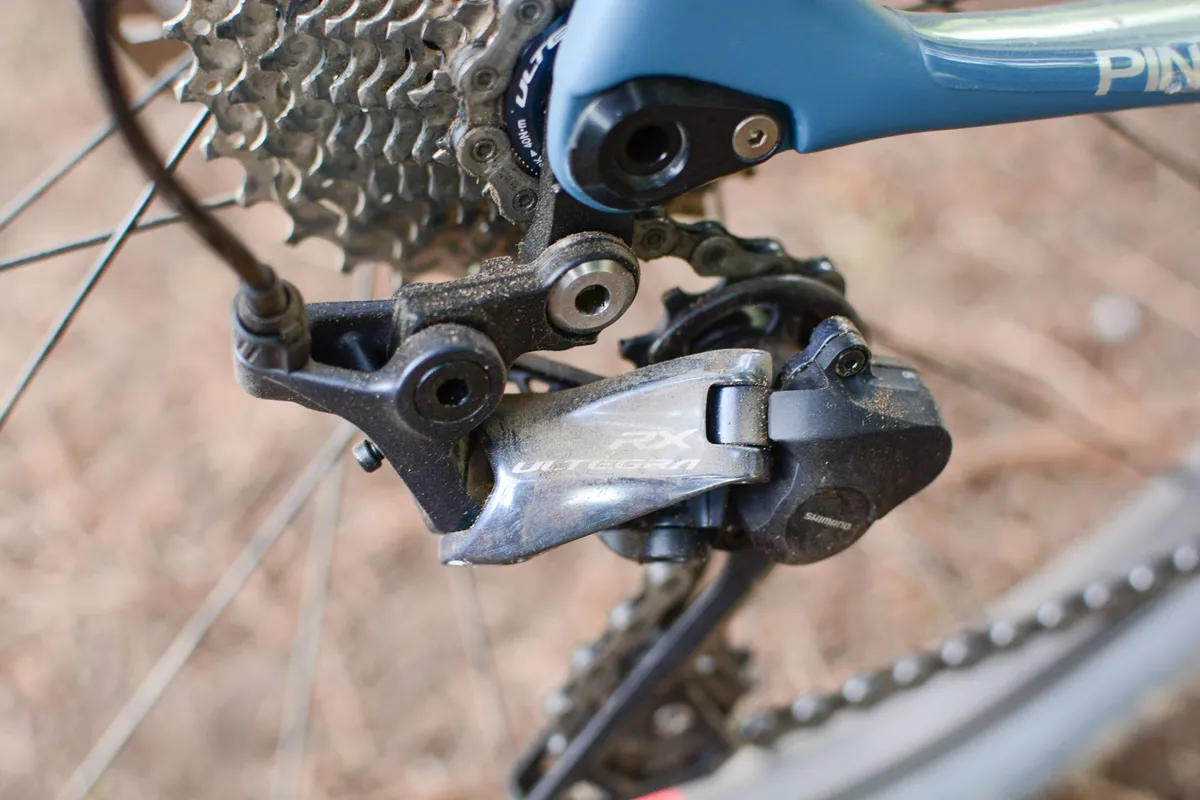
One thing I appreciate is that Ultegra RX rear derailleur. Chain slap is fairly minimal and yet shifting feels completely normal.
It’s fun but hard to justify
Pinarello says, “The more you suffer, the more you get satisfied,” which is kinky as hell, and also not really true.
The Grevil is appropriately focused for gravel racing, but there are better choices for all-road adventuring where the emphasis is on fun rather than speed. It’s also somewhat heavy and not generously specced for a bike costing four and a half grand.
I’ve enjoyed the Grevil a great deal and it’s very good at going quickly on dusty fire roads, but it’s objectively quite poor value for money.
If you’re a Pinarello die-hard you probably won’t care, but for the rest of us, it’s hard to make a rational case for the Grevil.
Pinarello Grevil specs
- Sizes (*tested): 44, 47, 50, 53*, 56, 59
- Weight: 9.1kg
- Frame: Torayca T700 UD carbon
- Fork: Dedicated Onda full carbon
- Levers: Shimano Ultegra R8020
- Brakes: Shimano Ultegra R8070
- Cranks: Shimano Ultegra R8000 50/34
- Bottom bracket: Shimano Hollowtech II Italian thread
- Cassette: Shimano Ultegra R8000 11-32
- Chain: Shimano Ultegra R8000
- Front derailleur: Shimano Ultegra R8000
- Rear derailleur: Shimano Ultegra RX800 (R8000 level)
- Wheels: Fulcrum 650b Racing 7B DB
- Tyres: Vittoria Terreno Zero 650bx47mm
- Stem: Most F-series alloy
- Handlebar: Most Gravel Alloy
- Saddle: Most
- Seatpost: Most carbon aero
